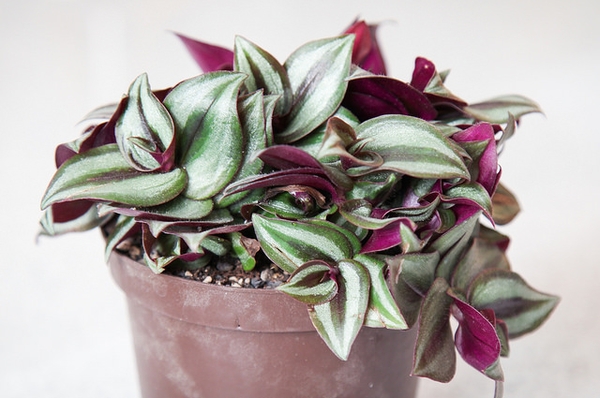
How to Care for Inch Plants (Tradescantia)
ADVERTISEMENT
A good article on the care of the wandering Jew plant. Although, I would like to add, that the branches of this plant are extremely tender. And you can break them off, just buy a glance. So I would caution anyone, to handle them with care. Once it's established as a full-sized plant, it's a more little hardy. But, as a young cutting. Those stems are very tender.
Just because something has "always been this way" or you're old is not a good reason to continue. We constantly learn and evolve our language. The National Gardening Association (NGA) and a number of professional horticulturalists have acknowledges this. Unless you're a plant person or Jewish, I'm not sure you would know. I'm glad the Almanac's forward thinking and not anti-semitic; it may take a few years for regular people in plant stores to catch up. As someone else said here, "Just because you find something inoffensive doesn't make it so."
The genus Tradescantia commemorates John Tradescant the Elder (1570s-1638). Massively famous and significant. An extraordinary plant hunter and master gardener who began his career as head gardener to Robert Cecil, 1st Earl of Salisbury ... gardener to the royal favourite George Villiers, 1st Duke of Buckingham ... Keeper of his Majesty's King Charles I's Gardens, Vines, and Silkworms ... the Oxford Physic Garden. His royal patrons sent him all over to collect for their gardens and greenhouses -- the Low Countries, Arctic Russia, the Levant/North Africa. With his son, maintained their own garden and museum in South Lambeth, known as the Tradescants' Ark -- the first public museum in Britain. The common house plant under discussion here was sent to him by a friend in Virginia (it is indigenous to Mexico); another friend sent the scarlet runner bean from the West Indies. His son, John Tradescant the Younger, was also a traveller (mostly to North America), plant hunter, master gardener. Their huge museum collection went to Elias Ashmole and became the foundation of the Ashmolean Museum in Oxford. This link lists some of the 750 species they brought to England: https://people.elmbridgehundred.org.uk/biographies/john-tradescant/ They were just as famous for the numerous "rarities" in their large museum of the world, among which is one of the few specimens of the extinct dodo. Their travels explain the "Wandering" part of the houseplant's name. Were they Jewish? If they were Jewish in 17thC England, it would likely have been a private matter. Casual research turns up nothing certain, only this suggestion from a 1638 visit: "The Christian world is also indebted unto that painful industrious searcher and lover of all nature’s variety for the late knowledge of the spiderwort..." -- though that might only signify collection from nonChristian territories. (You can find the whole letter here: https://thejunket.org/2015/01/issue-thirteen/tradeskin/.) But I would like to think they were.
"some PC nonsense... forced on the public" and "a perfectly good name and there's nothing offensive about it"
The name refers alternatively to the legend that a Jew mocked Jesus on the way to the cross and was forced to wander the Earth until the apocalypse or to the supposed itinerant, rootless nature of Jews. There are centuries of stereotypes built around these myths. Please consider that the world is larger than what you know. Just because you find something inoffensive doesn't make it so.
Thank you for the information you provided about the name “Wondering Jew” I did not know this..was very interesting. I was just going to post on social media about my plants didn’t know the correct name I didn’t want to offend anyone reading this put my mind to ease. Again thank so much for your comment.










Comments